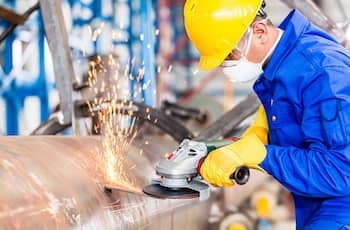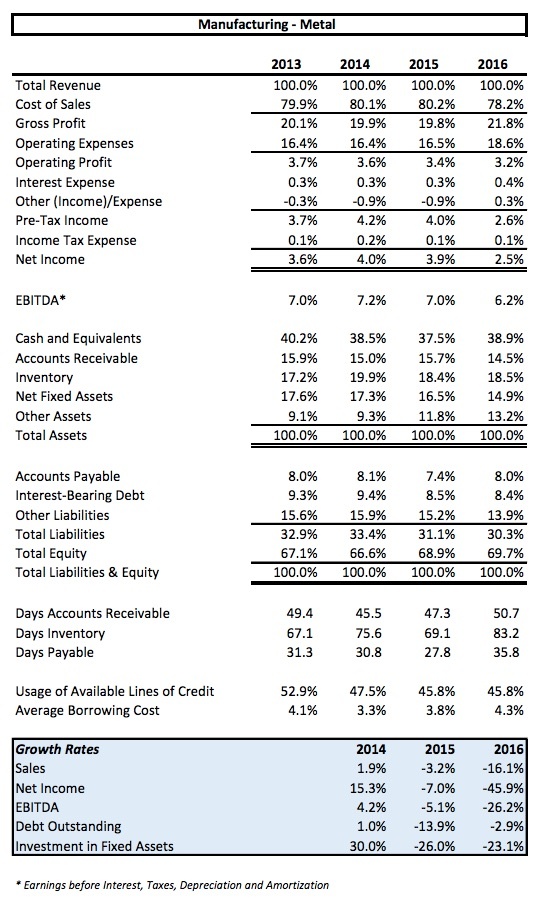Reliance on Other Weakened Manufacturing Industries Leaves Metal Manufacturing Industry in Continued Decline – for Now
 The following overview of metal manufacturing industry trends is part of a larger series of industry reports that will be published between August and October 2017 for the benefit of our subscribers. Data and information provided is cited from IBIS World, a global business intelligence leader specializing in Industry Market Research.
The following overview of metal manufacturing industry trends is part of a larger series of industry reports that will be published between August and October 2017 for the benefit of our subscribers. Data and information provided is cited from IBIS World, a global business intelligence leader specializing in Industry Market Research.
In 2016, Meaden & Moore clients in the metal manufacturing industry experienced a 16% decrease in revenue, causing a 46% decrease in net income. The metal manufacturing industry as a whole has experienced low negative growth over the past few years, largely due to decreased metal prices, decreased corporate profits, and decreased industrial production.
With steel and other metal input prices decreasing, the value of metal manufacturing industry finished goods is also decreasing, creating a downward pressure on revenue and the value of inventory. Many of the end products for this industry are inputs for other manufacturing industries, or inputs for other industries’ capital expenditures. This causes the metal manufacturing industry to be very reliant on the performance of other manufacturing industries. As one of the metal manufacturing’s largest buyers, the weakened oil and gas industry is hurting this industry’s profits. Luckily, industries such as aerospace have offered consistent demand for metal products, slowing the revenue decline for the metal manufacturing industry as a whole. Such industries require products technical skill to develop, allowing higher profit margins to be charged for those products.
Looking forward, the prices for metals and oil are projected to increase, while the nation’s industrial production is projected to remain fairly constant. Due to these factors, the industry as a whole is expected to increase slowly over the next few years, rebounding from the recent decline that it had experienced in 2015 and 2016. The aerospace industry in particular is expected to have an increase in demand over the next five years, driving demand for metal products. Technological advances allowing the creation of new alloys that are more durable, lighter, temperature resistant, or corrosion resistant will also begin to become more popular among metal manufacturers. The metal manufacturing industry is also expected to consolidate over the next few years, increasing efficiencies and economies of scale.
Source: IBIS World.
The following chart "Manufacturing - Metal" is compiled by Meaden & Moore. 
Lloyd W.W. Bell III is Director of the Corporate Finance Group at Meaden & Moore. He has over 30 years of experience in financial management.








